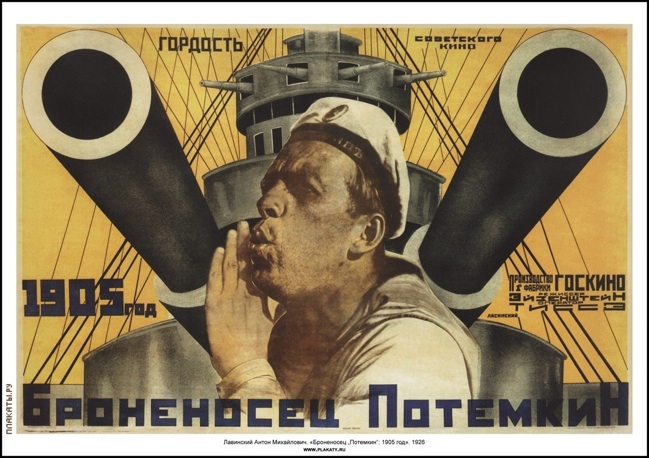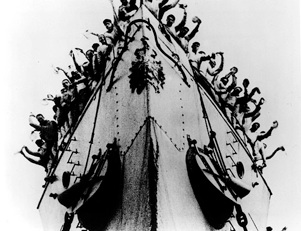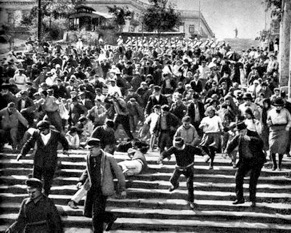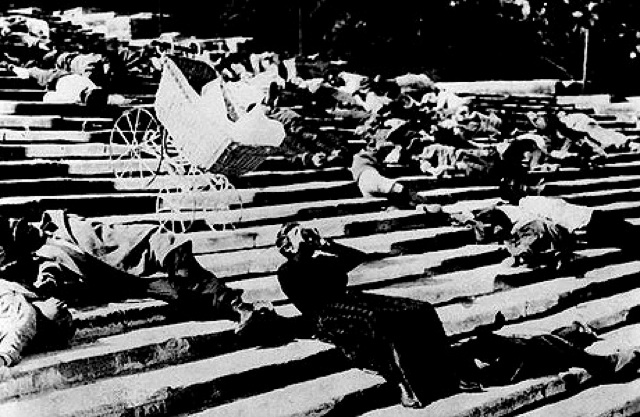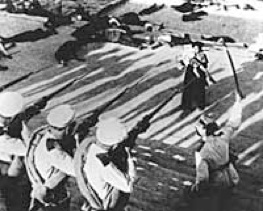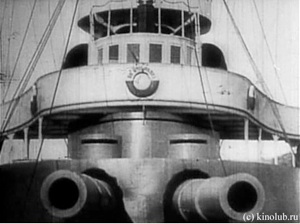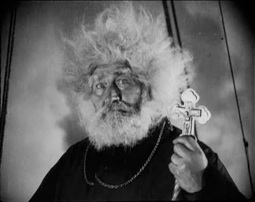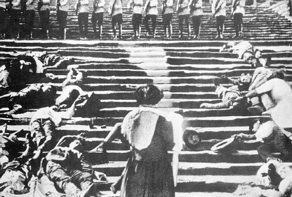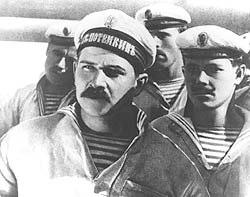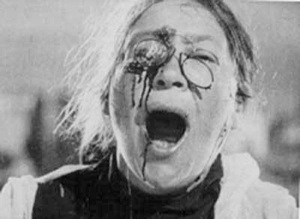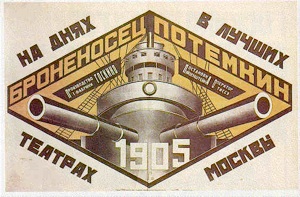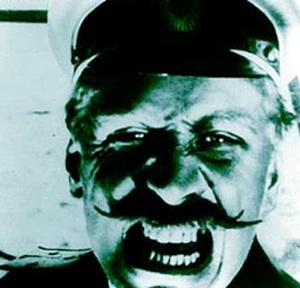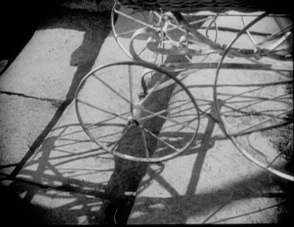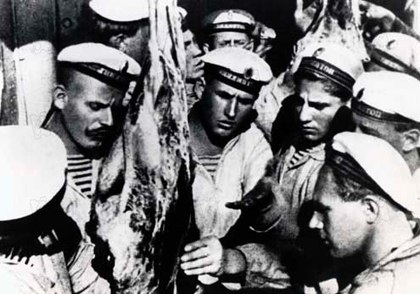5. Eisenstein 1
Readings
Zabel: “Dialectical Montage in Eisenstein”
Eisenstein: “The Montage of Attractions”
Discussion:
Make your entries for Session 5 in the Discussions page of our Blackboard Site
Film:
Eisenstein: Battleship Potemkin (1925)
Perhaps the most famous film to have come out of the Soviet Union, Battleship Potemkin is considered to be Eisenstein’s masterpiece. Set during the 1905 Revolution, the film concerns an uprising of sailors against their commanders after continuous cruel and callous treatment. This act leads to a rebellion in the port city of Odessa, which culminates with the tsarist military forces shooting down the rioters as well as innocent bystanders. This segment of the film includes the famous Odessa Steps sequence, in which an innocent woman is shot by the guards, leaving her infant in a pram to roll down the steps, a scene which has been widely cited and imitated in later films.
The film, which has come to influence many films around the world, illustrates Eisenstein’s formulation of montage theory. Instead of focusing on clearly named and defined characters, Eisenstein centres his narrative on the collective instead in order to better replicate the experience of the masses. As part of this, Eisenstein cast non-actors in his roles, in order to diminish any associations with the 'movie star' and provide more relatable 'everyman' figures for the audience. Furthermore, Eisenstein clearly privileges editing, or montage, in this film, creating meaning and emotion through careful juxtapositions and rhythmic editing. Battleship Potemkin was intended to function as revolutionary propaganda as well as to employ the theories of montage to incite emotional and intellectual reactions from its audience. It was heralded by Soviet intellectuals, including Vladimir Mayakovsky, as being a socialist triumph, and it was immediately exported around the world to great acclaim.
- Jay Leyda. Kino (London: C. Tinling & Co., 1960) 197.
Director: Sergei Eisenstein
Writer: Sergei Eisenstein
Cast: Aleksandr Antonov, Vladimir Barsky, Grigori Aleksandrov
Year: 1925
Studio: Mosfilm

